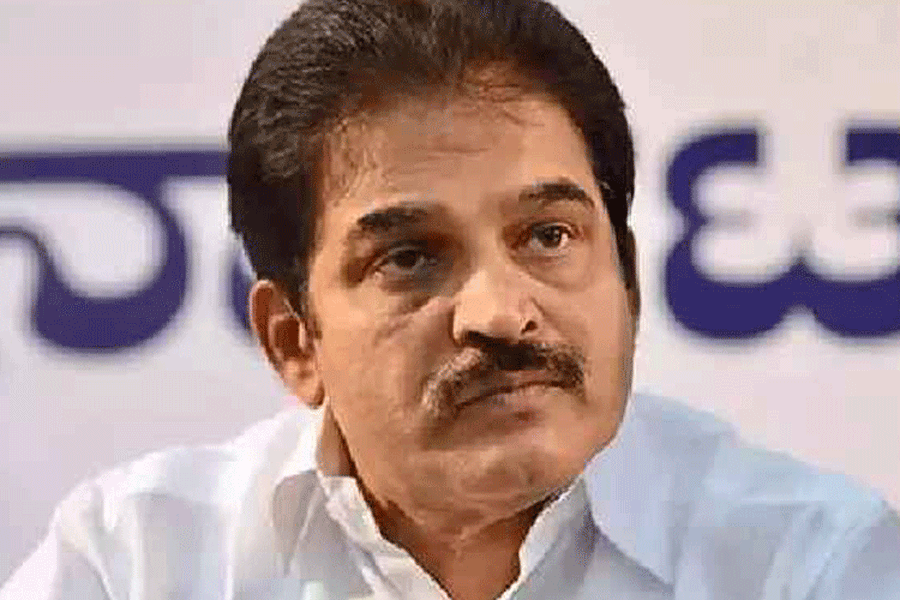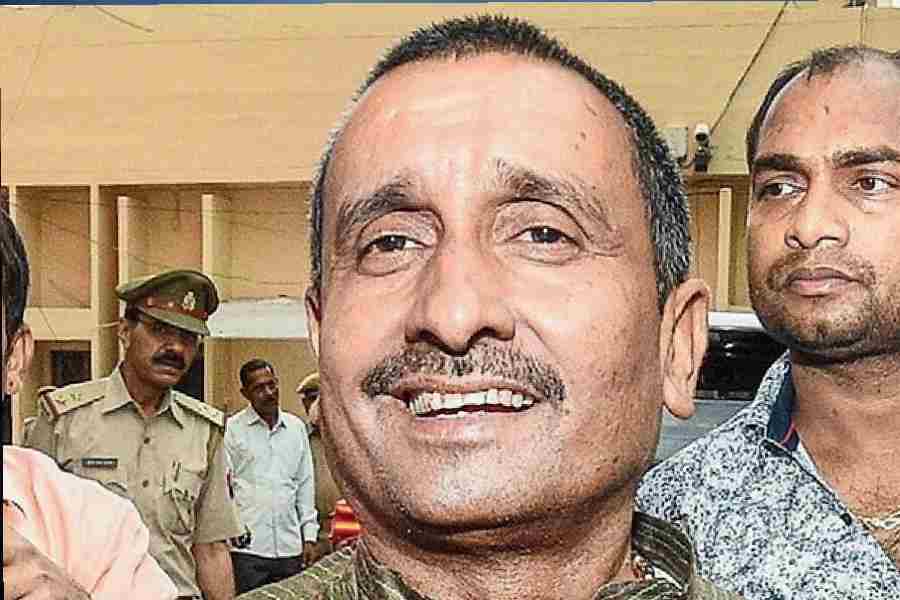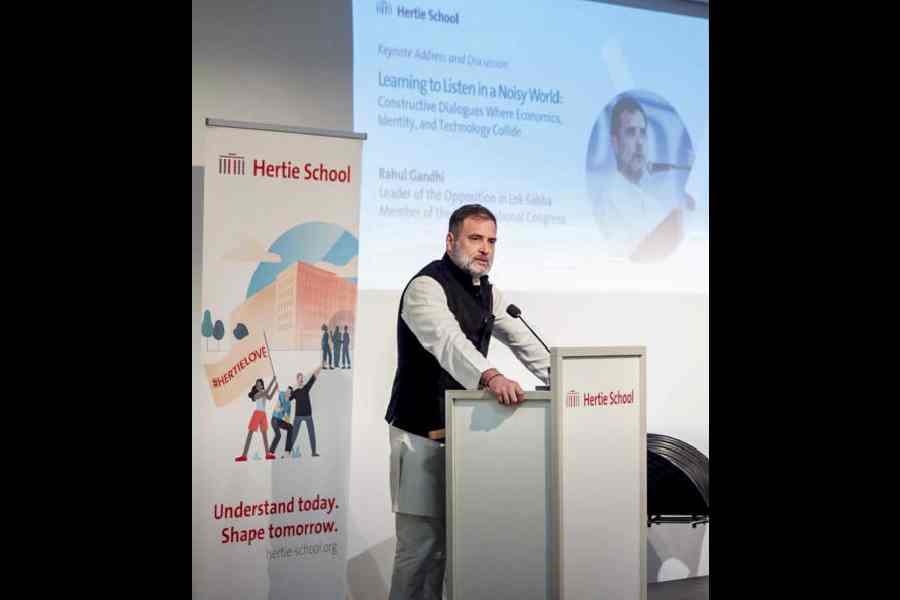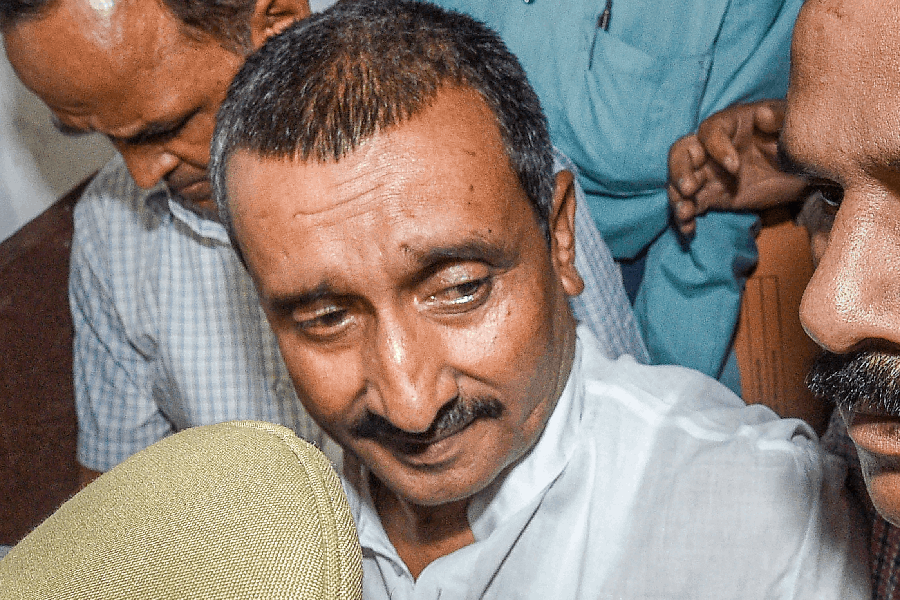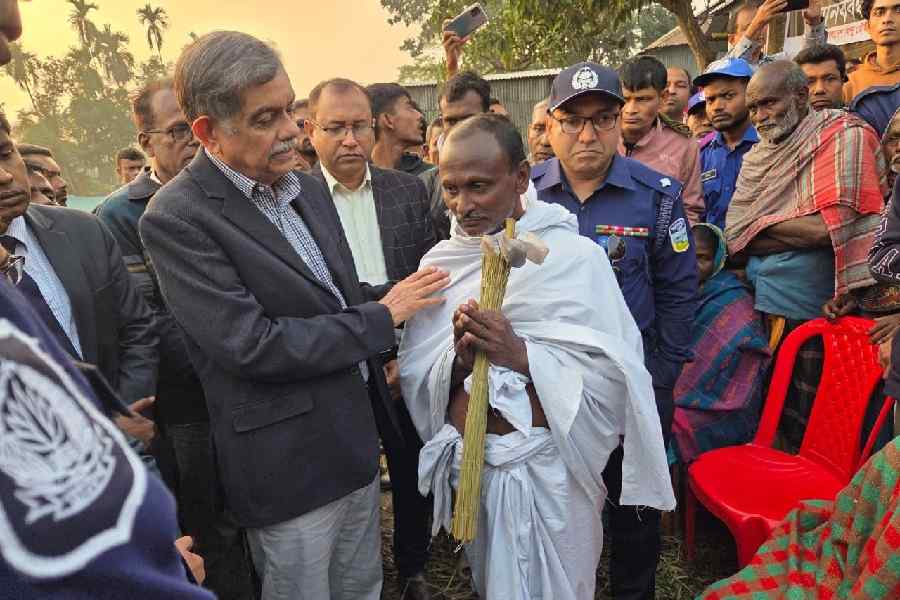 |
The high-ranking Japanese chief executive waited for an hour in a Tokyo holding room for Narendra Modi and Shinzo Abe to finish their meeting before he could get into the state banquet at Akasaka Palace, where he hoped to have a word with Modi.
The CEO’s business, though, was not with the visiting prime minister but with his successor in Gujarat — the chief minister, Anandiben Patel. Modi had promised this CEO that liquor would be allowed in the Japanese township in Gujarat, making it a small island of wetness in an otherwise dry state. It was a concession that would make life easier for his company’s staff posted in Gujarat and the CEO had handed down Modi’s assurance to his executives when they were sent to the state. What would happen now that Modi has moved out of Gandhinagar to New Delhi? For the sake of his Japanese employees living in Gujarat, this CEO was prepared to travel all the way there and meet the new chief minister, but before that he wanted Modi to put in a word to Patel and affirm his earlier commitment given to the CEO. That was the motivation for this man to attend the banquet for at Akasaka Palace.
Such little things are what will determine ultimately the fate of the $35 billion investment that Abe intends to mobilize for India. It is such impressive aid and investment figures that Abe touted to Modi, which have prompted the latter’s just-concluded visit to be universally acclaimed as a big success for the new prime minister’s foray into bilateral diplomacy beyond the confines of South Asia. Indian diplomacy’s record of signing memoranda of understanding and making wordy joint declarations during state visits has always been impressive. But the record of the Indian State following up on or implementing them is abysmal. A study some time ago brought out the reality that the highest figure of actual implementation of such MoUs went to Singapore. And that was 12 per cent for most of the period covered by the study, going up marginally to 15 per cent in one year.
The worrying truth is that even with a highly efficient system like Singapore, many of the projects that are agreed upon through MoUs do not actually translate into factories or joint ventures on the ground. With many other partner countries, 90 to 95 per cent of investment proposals announced with great fanfare during state visits end up in trash bins and are forgotten until another state visit takes place when new MoUs are fancifully produced.
Modi has a stellar record of seeing through projects and implementing them as a hands-on chief minister of Gujarat. But now he will be dealing with the reality of the rest of India. Japan will be his first test of how much he can change the culture of tardiness and incompetence when it comes to the rest of the country.
Modi’s Japan visit is matched in outstanding public relations only by similar visits abroad by Jawaharlal Nehru in the era of decolonization: but Nehru’s visits were political. A historic visit by Nikita Khrushchev and Nikolai Bulganin across a large swathe of India in 1955 combined economics and politics. Soviet economics succeeded in laying the foundations of Indian heavy industry only because of Moscow’s determination that it should succeed, and because Nehru took a personal interest in those agreements. There is no doubt that, like Nehru, the current prime minister will take determined personal interest in seeing through what he got out of his visit to Japan. When he became prime minister in May, Modi’s first function with shades of diplomacy at 7, Race Course Road, his office-cum-residence, was the release of a publication by Ashley Tellis, an Indian American who has done much to promote relations between India and the United States of America.
As someone who speaks his mind, Modi said after his formal speech, as he mingled with guests for about 45 minutes, that “my first love is Japan”. His statement surprised guests who were expecting Modi to say nice things about the US instead of the truth of his convictions. Such assertions are proof of Modi’s deep commitment to turning Indo-Japanese goodwill into yen and rupees. What is to be seen, however, is whether there is a similar commitment on the part of Japan and whether like Khrushchev and Bulganin, Abe and his successor will go that extra mile to fulfil commitments made during the latest India-Japan summit.
It is not a question of political will alone. Japanese businesses are insular by tradition: they may have an impressive global presence, but they have resisted the challenge to globalize the way American, German, Malaysian or even Taiwanese businesses have adapted to the world in the 21st century. As a result, like Japanese society, Japan’s economic presence abroad today leaves the impression of being aged.
Increasingly, Japanese enterprises abroad are unable to match the aggressiveness of the South Koreans or even the relatively new entrants from southeast Asia, the Indonesians. When it comes to the crunch of dealing with India’s inefficiency and its legal maze at best, its corruption and the negativism of its bureaucracy at worst, the Japanese may turn out to be no match for competitors from their neighbourhood of the Association of Southeast Asian Nations. That is where Abe’s grand promise of $35 billion in five years may get stuck.
But, for now, Abe has been smart enough for our media and our pundits, most of whom were dazzled by the public outreach of the visit, and therefore had no time for the fine print. As proof, read the document issued after the Modi-Abe meeting with the grand title of “Tokyo Declaration for India-Japan Special Strategic and Global Partnership”, especially the section with a grander sub-title, “Partnership for Prosperity”. On the question of $35 billion, the fine print says “Abe expressed his intention to realize 3.5 trillion yen of public and private investment and financing from Japan…to India in five years”. It is no more than an intention. Good intentions and like goodwill. There is no firm commitment to do anything. It is very revealing that elsewhere in the same document, “Abe pledged (an) Overseas Development Assistance loan of 50 billion yen to India.” This is a pledge and it is linked to specific projects. But the bigger amount of $35 billion is an intention and it is not identified with any project, and therefore, very much a castle in the air for now.
The effort here is not to doubt Abe’s sincerity or to challenge his goodwill for India. The point really is that the Indian establishment has to make it happen. The personal chemistry demonstrated between Modi and Abe alone will not be enough to persuade hard-headed Japanese entrepreneurs to put their money where their mouth is. Fortunately, the engagement between New Delhi and Tokyo has a strong Track II element: the Ananta Aspen Centre’s “Indo-Japan Strategic Dialogue” with the Japan Institute of International Affairs, with the Confederation of Indian Industry chipping in, has proved its worth in recent years with its dogged pursuit of objectives that Modi is trying to bring to fruition.
The pundits may have been taken in, but not Modi. In yet another sign that Rashtrapati Bhavan and the Prime Minister’s Office are complementing each other on the nation’s foreign policy goals, the president, Pranab Mukherjee, will go to Vietnam next week on a four-day visit. That is an encouraging signal that while Japan’s efforts to deepen economic relations are being appreciated, there will be parallel initiatives to tap into a reservoir of opportunities that are offering themselves from the Asean and its surroundings. Mukherjee’s visit, soon after the external affairs minister, Sushma Swaraj, travelled to Vietnam is part of the new government’s conclusion that New Delhi has ‘looked’ eastwards long enough. The effort now is to ‘act’ east as well, a distinction that Swaraj has spelt out.
The government’s moves to stop looking east and begin acting are receiving encouraging responses in part because almost all countries in the region have become functioning democracies, giving up military uniforms in their leadership when accountability was in short supply. Whether it is in Indonesia, Malaysia or elsewhere in the region, those in power now have to show results in order to be re-elected. The narrative of an emerging India precisely offers them opportunities to show results.


